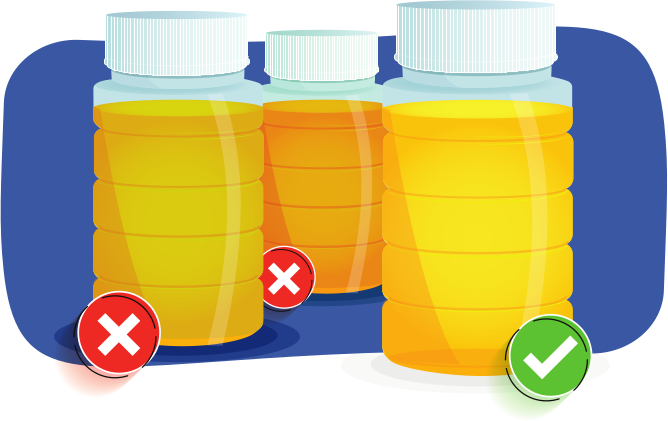Lubricant Consolidation and Optimization: Which Lubes Stay and Which Lubes Go?
 Lubricant consolidation is the practice of selecting lubricants and stocking only what is necessary for optimal machinery performance on-site. We often visit different facilities for lubrication assessments and lubrication program development projects, and when we do, one of the main areas of focus is the lube room. Generally, in any given lube room, we will see some of the current lubricants and a dozen or so other lubricants shoved in the back corner that hasn’t been seen or heard from in years. Yet those old lubricants are still part of the lube list we receive before data collection for our LPD2 service. This can be confusing for a new technician, and we’re there to help resolve that confusion. Before we do that, there are a few steps we must first take in order to figure out which lubricants stay and which lubricants go.
Lubricant consolidation is the practice of selecting lubricants and stocking only what is necessary for optimal machinery performance on-site. We often visit different facilities for lubrication assessments and lubrication program development projects, and when we do, one of the main areas of focus is the lube room. Generally, in any given lube room, we will see some of the current lubricants and a dozen or so other lubricants shoved in the back corner that hasn’t been seen or heard from in years. Yet those old lubricants are still part of the lube list we receive before data collection for our LPD2 service. This can be confusing for a new technician, and we’re there to help resolve that confusion. Before we do that, there are a few steps we must first take in order to figure out which lubricants stay and which lubricants go.
-
Survey every lubricated machine and component in the entire facility and identify the lubricants that are in use. We also collect pertinent data from each machine; for electric motors, we may collect HP, speed, frame size and other operational and environmental data. This can be very difficult in some plants, depending on their age and if they have attempted lubricant consolidation or other lube program developments in the past.
-
Next, collect the name, make and type of every lubricant in the lube room, as well as lubricants found randomly throughout the plant. This list can then be combined with the list of lubricants created in STEP 1 to form a complete list of lubricants in the facility. Once we have figured out all of the current lubricants in each machine and component, we will have collected the necessary data for making our own recommendations of what lubricants should be utilized in each machine.
-
Next, we take all of that data back to our home base and study each machine and component to outfit it with hardware, recommended lubricant, sampling, inspections, etc.
-
We then consider all of the collected information and come to a recommendation for all of the greased components and all of the oiled components.
-
We align our recommended lubricants with the current lubricants in use and all of the lubricants on site. We recommend lubricants based on a codified approach called a Lubricant Identification System (LIS) Code. This allows us to recommend viscosity, additive package, base oil type and application without being brand-specific - Noria is a vendor-neutral company. For this step, we must take into account the compatibility of the current lubricant and the recommended lubricant. For example, you don’t want to purge a bearing with an aluminum complex thickened grease if there is a calcium thickener in the current grease.
-
Once the recommendations are formulated, they are sent to the facility for approval by the stakeholders involved. Explanations are provided, and a review is done for this approval process. Once the lubricants are approved, we are also left with a list of lubricants that are no longer utilized but still remain in the plant.
-
We advise the company to properly dispose of all the lubricants that are not in use. This has two benefits: it opens up space in the lube room for current and recommended lubricants and ensures that the incorrect lubricants randomly found throughout the plant are not accidentally used.
The Final Step: Optimization
Now that we have eliminated the unused and outdated lubricants on-site, it is time to optimize the lubricants that are on-site. We often tell the end-users that “consolidation” isn’t necessarily the right word to use. Instead, “optimization” is much more accurate. This means that not only do you “sometimes” have fewer lubricants on-site, but you now have the correct lubricants on-site. I put “sometimes” in quotations because sometimes the lubricant consolidation process will end with the same number of lubricants or near the same amount as before. Some may have been removed, and some might have been added, but the result is an optimized selection of lubricants, ensuring the right lubricant is selected for each machine.
We optimize a lube list by assigning specific greases and oils based on the machine data and operational and environmental parameters. This could mean that now the facility only utilizes four greases instead of eight greases; one for high-speed, one for low-speed, one for couplings and one for electric motors, for example. However, that is not always the case. Some lubricants fit the viscosity and additive parameters for multiple machine types, but some lubricants will only meet the parameters of one specific machine. We consolidate and optimize lubricants in order to reach extend machinery life and optimize machinery performance. That is the ultimate goal of machinery reliability.
